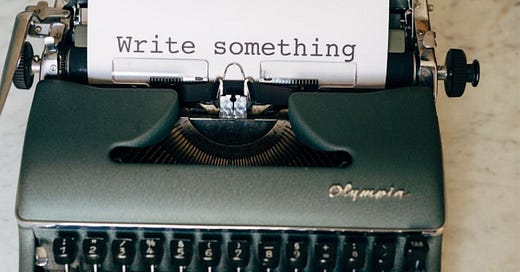The secret life of first-time authors
(or: Why I almost named my book The Panic Draft)
There’s a very specific kind of anxiety that nobody warns you about — the First-Time Author Panic (FTAP, for those of us too nervous to spell it out). It is not the loud, glamorous kind of anxiety one might imagine. Nobody is throwing typewriters out of windows or stalking out of cafés with scarves flapping dramatically in the breeze. No. FTAP is more like a slow-drip leak in the ceiling — subtle, persistent, and capable of warping all your internal furniture over time.
It starts innocently enough. You announce you are writing a book. People applaud. You feel important. You walk taller. You buy a notebook. Maybe two.
Then the questions begin.
“What’s it about?”
This one stings the most, because you don’t really know. It was about curiosity. Or maybe resilience. Or mangoes. You had a framework. You had a mind map. You definitely had a phase where you insisted the chapters had to follow the Fibonacci sequence.
Then comes the title.
Ah, the title. This is where FTAP shifts into high gear. I had a list so long it needed chapters of its own. At one point, I seriously considered:
Please Never Ask That Again
Wildly Curious
The Curiosity Condition
Peak Pursuit (yes, I shamelessly tried to name the book after my Substack — peak laziness, in hindsight)
Every title felt either too vague, too clever, or somehow accused me of trying too hard — which, of course, I was.
There were several rounds of soul-searching, renaming, backtracking, and 2am epiphanies before a version finally made it to the publisher. By then, the worst of the spirals had passed. The chosen title — Accidentally Wise — felt honest, slightly cheeky, and exactly right. I had stopped trying to be clever and just let it sound like me. That helped. I no longer worried it might sound like a Netflix docuseries about mildly interesting crimes — which, at one point, was a very real concern.
Meanwhile, our child became the unofficial creative director of the whole project.
Calmly, confidently — and with none of the panic I radiated — they designed early cover concepts. Actual cover designs. Not stick figures or abstract crayon blobs. Fonts were chosen. Margins aligned. Opinions offered with conviction.
They also volunteered to do the first round of edits on a few chapters. Which they did with the measured tone of a seasoned editor who doesn’t see what the big fuss is about. “This part could be shorter,” they said once, about a passage I had rewritten six times. “Also, I think you’re funnier when you don’t try so hard.”
I accepted this feedback. Then went and stared into the fridge for ten minutes.
And through it all — like bedrock beneath the noise — was my spouse.
Rock solid, reassuring, and unshakeably kind. She has stood by me at every stage, offering thoughtful inputs and patient support — especially on days when I spiraled because a paragraph didn’t go the way it had played out in my head.
She tolerated mood swings that arrived unannounced and left only after being placated by herbal tea and long conversations. She let me rant about voice and tone and word counts and typos with the seriousness of a person reporting national security threats. She never once rolled her eyes — at least not where I could see her.
By the time the manuscript reached the publisher, most of the chaos had settled.
Title, check. Essays, check. Edits, mostly done. What remained were reasonable, civil suggestions about typesetting and some practical nips and tucks on the cover design. No existential meltdowns. No last-minute rewrites. Nobody begged me not to insert an asterisk in the subtitle “just in case it sounded too confident.” (To be clear, I didn’t propose the asterisk this time.)
The team has been professional, generous, and unflappable — the kind of people who let you feel like a grown-up while quietly making sure you don’t glue your manuscript to the ceiling.
And so here I am, in the final stretch. Typesetting and final edits underway.
I don’t yet know how the book will be received — whether it will resonate, amuse, or quietly take its place on a shelf (real or virtual), nestled between other good intentions — but I do know this:
This time, I feel something close to triumph. A kind of deep, satisfying “I didn’t abandon this at draft 9” joy.
It turns out, the miracle wasn’t just writing the book. It was staying with it. Through the title churn. The inner critic monologues. The cover design questions. The paragraph that refused to behave.
And more than anything, it was the quiet, steady presence of people who helped it along.
The ones who listened. Who designed. Who edited. Who gently told me when a joke didn’t land. Who reminded me that done is better than perfect — and that commas can be fixed, but quitting leaves an odd aftertaste.





